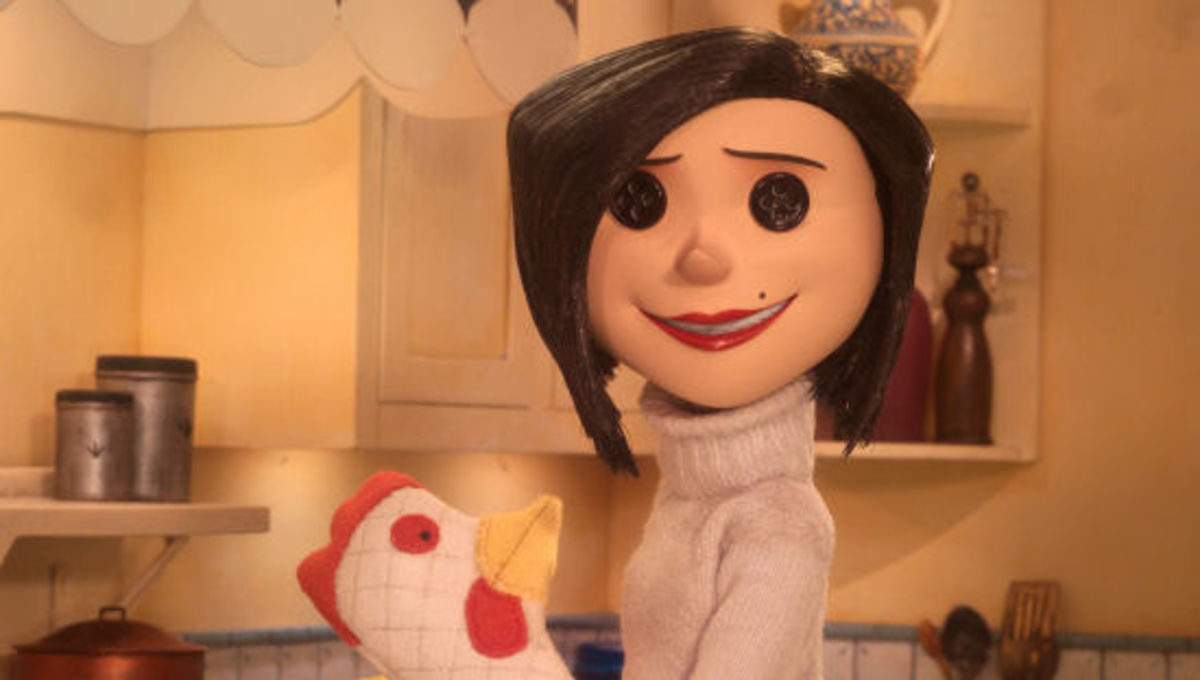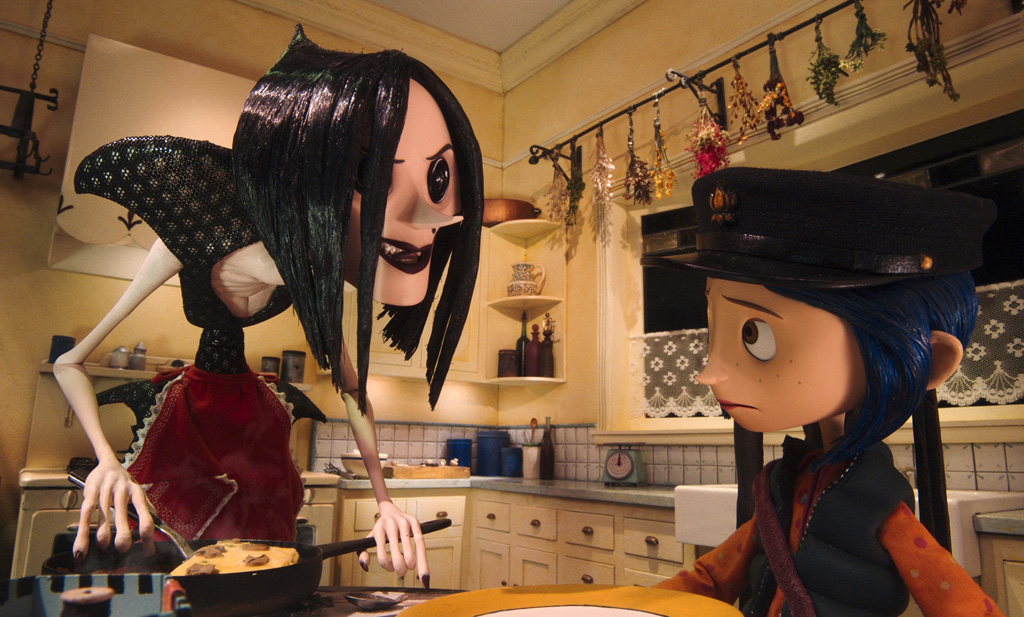Legendary Pictures: Coraline’s Macabre Whimsy Evokes Zelda At Its Most Bizarre
Posted on March 04 2020 by Brandon Schmitz

Life is too short, guys. Honestly, it’s hard to believe that Coraline turned 11 years old last month, as it feels like I was introduced to the film just yesterday. Having watched it five times during its theatrical run — more than any other movie I’ve seen — I was so entranced by this flick’s imaginative spirit. The endearingly adventurous heroine, the painstakingly immaculate stop-motion visuals, the haunting musical score — it all comes together to create what might be my favorite piece of Western animation.
Adapted from Neil Gaiman’s 2002 novella and directed by Henry Selick (The Nightmare Before Christmas), Coraline opens with the titular character and her parents moving into Ashland, Oregon’s Pink Palace Apartments. With her folks preoccupied with completing their gardening catalogue, 11-year-old Coraline Jones is often left to make her own fun. Such efforts are ultimately futile, as her first day at the apartment proves to be fairly dull.
Later that night, however, Coraline is awakened by a mouse and guided to a small door downstairs — one that serves as a portal to the Other World. Here, her parents are more attentive and cheerful, the meals more extravagant and delicious, and the apartment itself more colorful and lively. Sure, everyone in this world aside from Coraline has creepy buttons for eyes, but that’s neither here nor there! For as strange as this place is, the young adventurer is immediately enchanted by its wonders — so much so that, once she returns to her normal life the following morning, all she can think about is going back.

Based solely on that premise, one might wonder what business Coraline has being included in this article series. Certainly, animation studio Laika’s more recent outing, Kubo and the Two Strings, which was covered wonderfully by Sean, has more in common thematically with The Legend of Zelda. That said, one aspect of the series that doesn’t seem to be discussed a whole lot is just how downright weird it can be.
Since Alice in Wonderland — perhaps even before that — there have been countless stories centered on characters being transported to a strange, alternate world or dimension. The concept itself is nothing new, but there’s a particularly surreal, dreamlike quality to Coraline’s Other World that I found comparable to Majora’s Mask and Link’s Awakening — an alluring mishmash of the mundane and the bizarre. For example, Termina itself is geographically distinct from Hyrule, but many of its inhabitants bear a striking resemblance to folks from Ocarina of Time. Similarly, Koholint Island has its fair share of inexplicable cameos from other Nintendo properties.
Speaking of inhabitants, Coraline’s neighbors — both their real-world selves and their Other Worldian counterparts — remind me so much of the more out-there NPCs you’d find in a 3D Zelda game. They just boast this unique brand of eccentricity that is simultaneously off-putting yet charming. A circus mouse trainer who struggles with his craft on the top floor of the apartment? That’s a Zelda side quest waiting to happen.
Considering how too-good-to-be-true the Other World is, it’s only a matter of time before this idyllic wonderland comes apart at the seams. The young explorer’s Other Mother invites her to stay with her forever — under the condition, of course, that Coraline allow buttons to be sewn into her eyes. Eventually, Coraline’s aggressive demands to return home incur the Other Mother’s wrath, at which point she discovers that she is merely the next victim in a line of children from throughout the years.
The Other Mother strikes a deal with Coraline, insisting that she’ll release her if she can locate the eyes of her victims, which have been scattered across the apartment grounds. It’s at this point that the film goes full-on Zelda, complete with stones to collect and bosses to take down. Some of the more sinister imagery found in Twilight Princess would feel right at home throughout this sequence. Additionally, the time-sensitive nature of the quest — as visualized by a button-shaped shadow eclipsing the world’s moon — evokes a sense of urgency similar to that of Majora’s Mask. It all culminates in an elaborately staged showdown with the Other Mother — now in her final, more arachnid form — that begs to be converted into a Zelda boss fight.
Although this flick isn’t based on a video game, its structure and atmosphere — especially throughout the third act — work to make it feel as if I’m playing one. Next to Kill Bill, it’s probably the closest any movie has come to providing those distinct thrills. With Coraline and Kubo — two Legendary Pictures! — under Laika’s belt, I’m all for this studio coming full-circle and tackling the inevitable Zelda movie.
Brandon Schmitz is an original content editor for Zelda Dungeon. A serious anime and film buff, he’s still trying to make it by as a journalist in his hometown. His favorite Zelda game is Twilight Princess.




